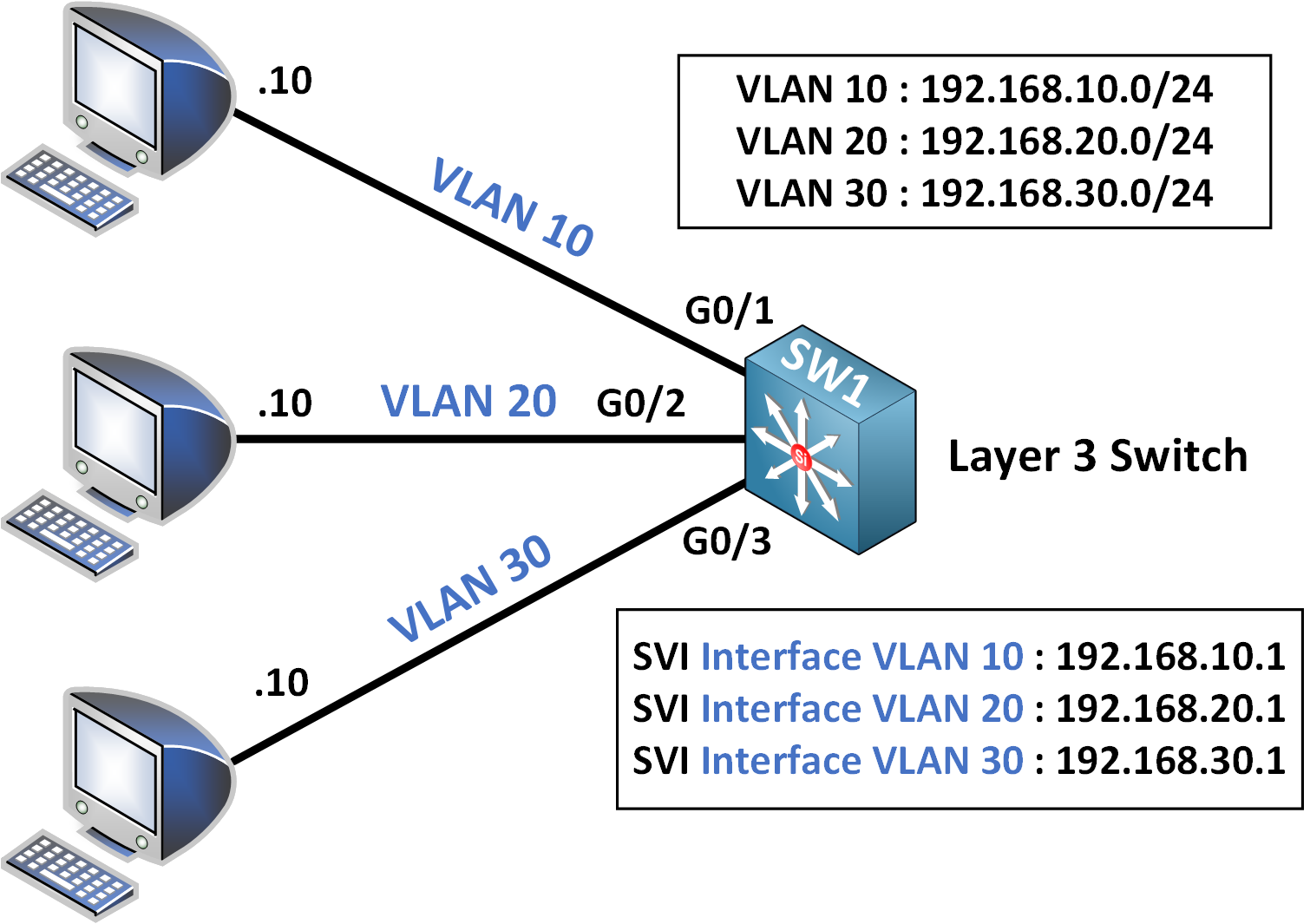SVI InterVLAN Routing is a method that allows Layer 3 switches to route traffic between VLANs without relying on an external router. By combining switching and routing capabilities within a single device, Layer 3 switches provide a faster, more scalable solution for network communication.
This type of SVI InterVLAN Routing setup is essential for networks that require efficient VLAN communication without external routing devices.
The diagram below illustrates a typical topology for implementing SVI InterVLAN Routing with a Layer 3 switch:

Figure 1 – SVI InterVLAN Routing with a Layer 3 Switch
Key Topology Overview
In this setup we see differents things :
A SW1 (Layer 3 Switch) is connected to PCs in different VLANs (VLAN 10, VLAN 20, and VLAN 30).
Each VLAN is assigned an SVI (Switch Virtual Interface) to act as its gateway for Inter-VLAN Routing.
Answer the question below
Step 1 - Create VLANs on SW1
Define each VLAN on SW1 with a unique VLAN ID:
SW1(config)# vlan 10 SW1(config-vlan)# name Sales SW1(config)# vlan 20 SW1(config-vlan)# name Engineering SW1(config)# vlan 30 SW1(config-vlan)# name AccountingStep 2 - Configure SVIs for Each VLAN
An SVI serves as the default gateway for devices in each VLAN. Here we need to configure an IP address for each SVI that aligns with the respective VLAN’s subnet !
40 % Complete: you’re making great progress
Unlock the rest of this lesson
If you’d like to continue your CCNA journey, create your free account now.
Access all free CCNA lessons
Practice with quizzes and level test
Progress tracking in your dashboard
Made by network engineers - CCNP certified
Create your Free Account1151 learners continued their CCNA journey this month